The S&P 500 had started to clear resistance, posting new all-time highs before sellers struck with a vengeance.
The selling was bad, similar to that seen in December, which markets had only started to recover from. Volume climbed to register as distribution, confirming market control by sellers. For the glass half-full set, markets are now back inside prior trading ranges. For the glass half-empty, this is selling that markets will find it hard to recover from.
I’ll start with the Russell 2000 (IWM). This index has been under pressure since November and was struggling at its 50-day MA before sellers turned the screw.
It’s now challenging the January ’bear trap’, which is likely no more, but has also lost its 200-day MA. This index is looking like the guide index for 2025.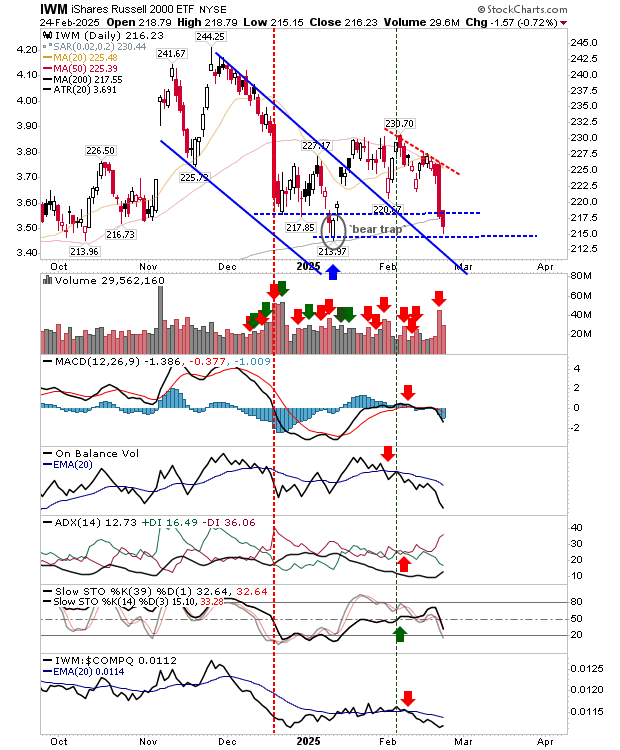
The S&P 500 undercut is ’bull trap’ and 50-day MA in the space of a couple of days. Loses of ’bull trap’ have a high probability of retesting (and likely losing) trading range support, down at 5,775. This is not a buyer’s index.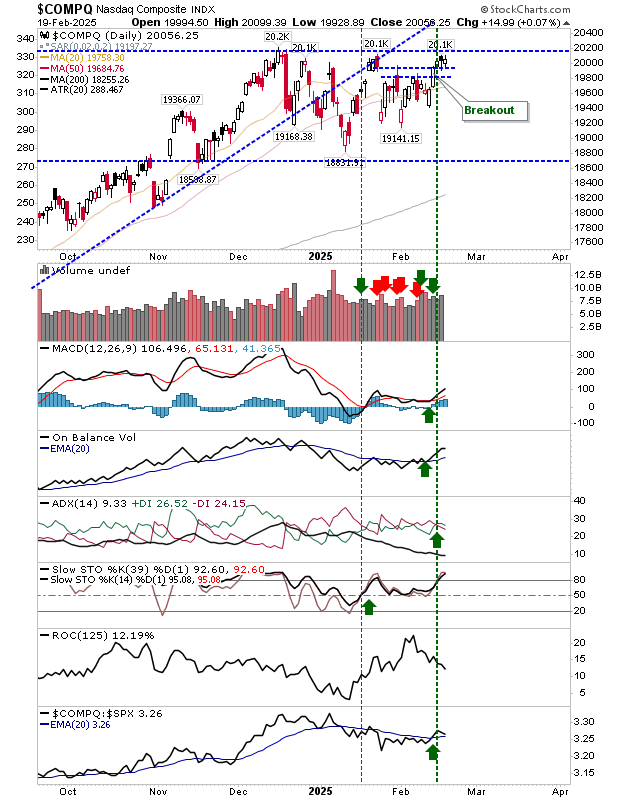
Losses in the Nasdaq are hidden by the trading range so the damage is not so severe. Assuming losses continue in the S&P 500 and Russel 2000, then the Nasdaq should go to test 18,700.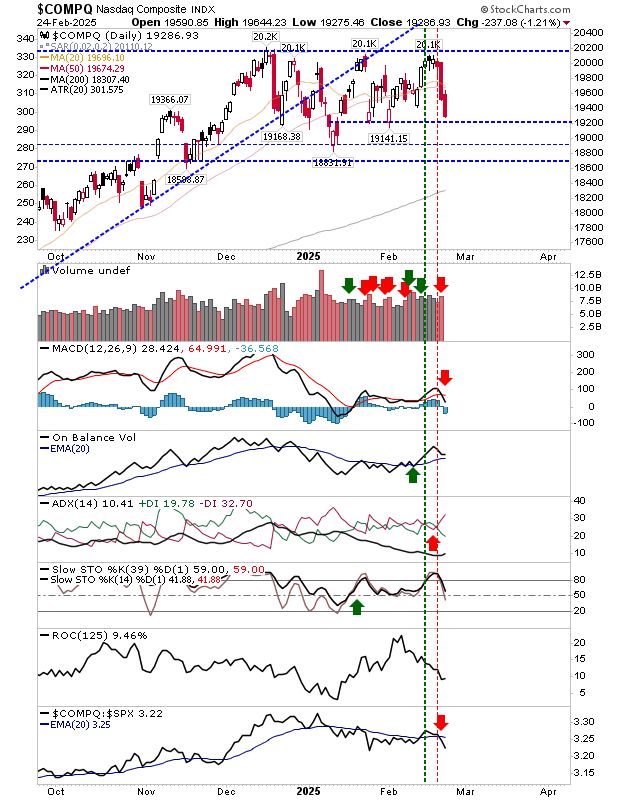
Feeding into weakness in the Nasdaq is the percentage of stocks above their 50-day MA that again was repelled at 45%.
No bull market can survive with so few member stocks above their 50-day MA; 33% as of today’s close with supporting technicals net bearish.
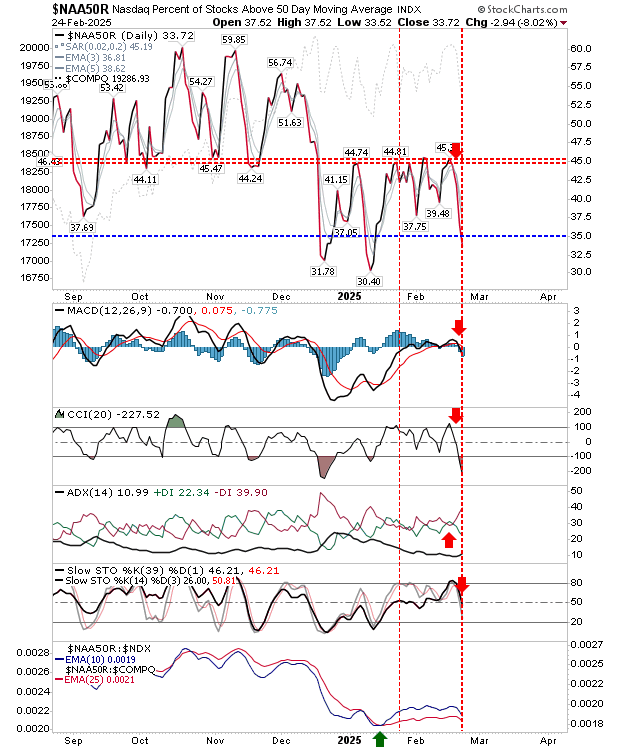
Feeding into the Nasdaq is the Semiconductor Index ($SOX). It featured a picture-perfect reversal from the gap, but really, is also range-bound.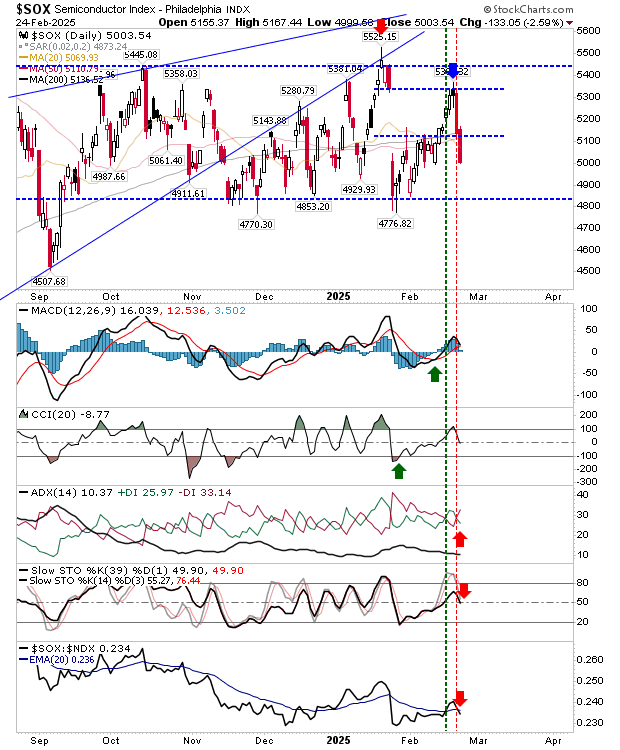
I will be watching the Russell 2000 ($IWM) for leads, it looks like it has broken its relatively young bullish trend and is at risk of drifting into a long-standing trading range. The loss of the breakout in the S&P is disappointing but simply redraws the parameters to define the next one.
